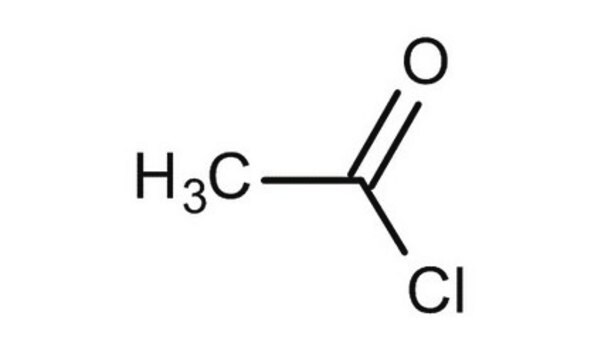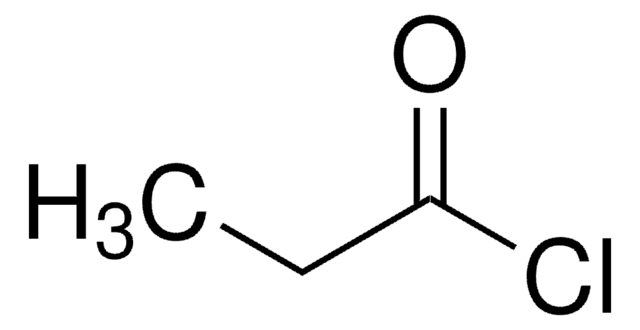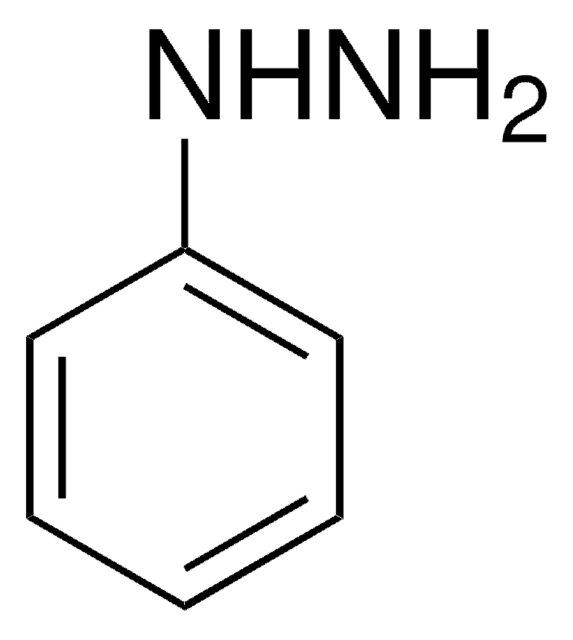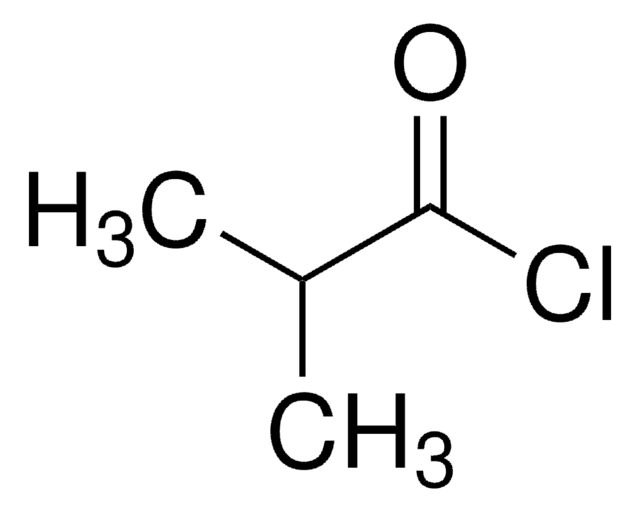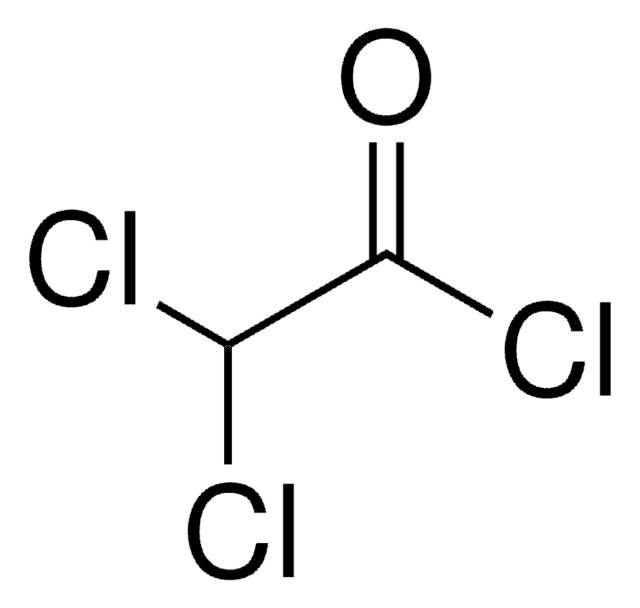320129
Acetyl chloride
reagent grade, 98%
Sinónimos:
Acetic acid chloride, Acetic chloride, Ethanoyl chloride
About This Item
Productos recomendados
grado
reagent grade
Nivel de calidad
densidad de vapor
2.7 (vs air)
presión de vapor
11.69 psi ( 20 °C)
32.33 psi ( 55 °C)
Análisis
98%
formulario
liquid
temp. de autoignición
1353 °F
lim. expl.
19 %
índice de refracción
n20/D 1.389 (lit.)
bp
52 °C (lit.)
mp
−112 °C (lit.)
densidad
1.104 g/mL at 25 °C (lit.)
cadena SMILES
CC(Cl)=O
InChI
1S/C2H3ClO/c1-2(3)4/h1H3
Clave InChI
WETWJCDKMRHUPV-UHFFFAOYSA-N
¿Está buscando productos similares? Visita Guía de comparación de productos
Descripción general
Aplicación
- Synthesis, Characterization, and Evaluation of Thiazolidine Derivatives of Cysteine for Suppressing Eumelanin Production.: The study discusses the synthesis and evaluation of thiazolidine derivatives of cysteine, where acetyl chloride is used as a reagent, underscoring its importance in pharmaceutical intermediate development. (Amino et al., 2016).
- New URJC-1 Material with Remarkable Stability and Acid-Base Catalytic Properties.: This research introduces the new URJC-1 material, noting its stability and catalytic properties, with acetyl chloride being pivotal in the synthesis process, illustrating its role in material science and catalysis. (Leo et al., 2016).
Palabra de señalización
Danger
Frases de peligro
Consejos de prudencia
Clasificaciones de peligro
Eye Dam. 1 - Flam. Liq. 2 - Skin Corr. 1B
Riesgos supl.
Código de clase de almacenamiento
3 - Flammable liquids
Clase de riesgo para el agua (WGK)
WGK 1
Punto de inflamabilidad (°F)
41.0 °F - closed cup
Punto de inflamabilidad (°C)
5 °C - closed cup
Elija entre una de las versiones más recientes:
¿Ya tiene este producto?
Encuentre la documentación para los productos que ha comprado recientemente en la Biblioteca de documentos.
Los clientes también vieron
Artículos
The Friedel–Crafts acylation is the reaction of an arene with acyl chlorides or anhydrides using a strong Lewis acid catalyst. This reaction proceeds via electrophilic aromatic substitution to form monoacylated products.
Nuestro equipo de científicos tiene experiencia en todas las áreas de investigación: Ciencias de la vida, Ciencia de los materiales, Síntesis química, Cromatografía, Analítica y muchas otras.
Póngase en contacto con el Servicio técnico
